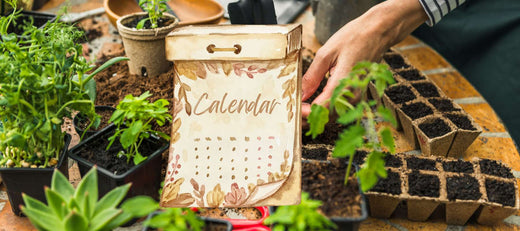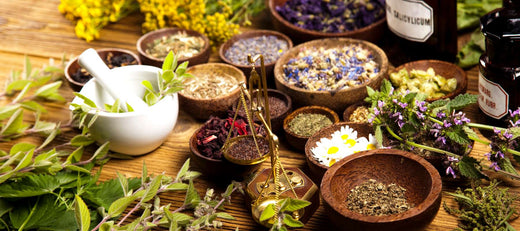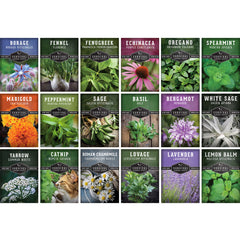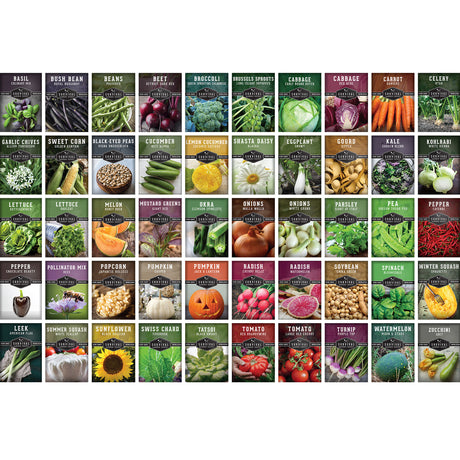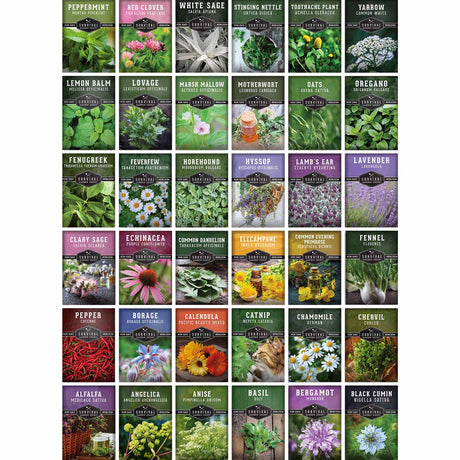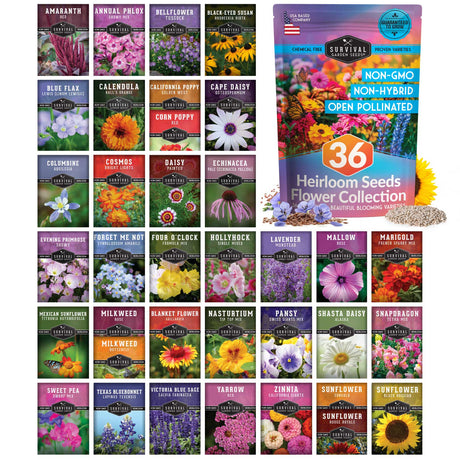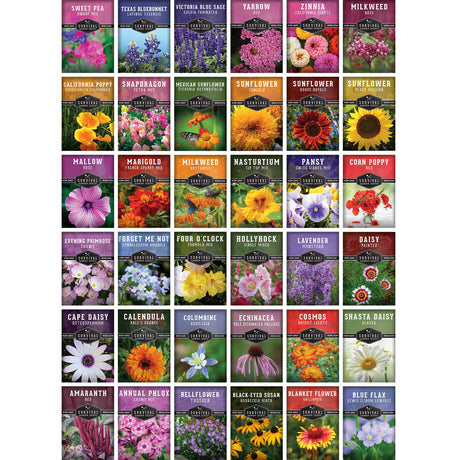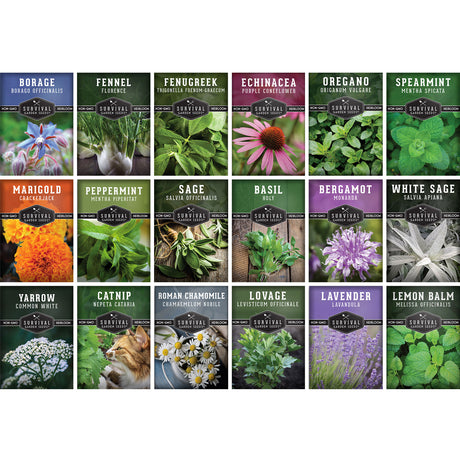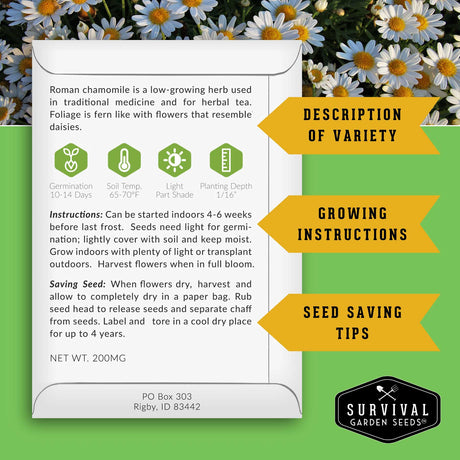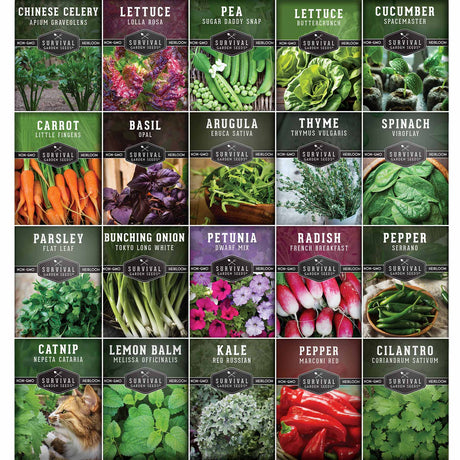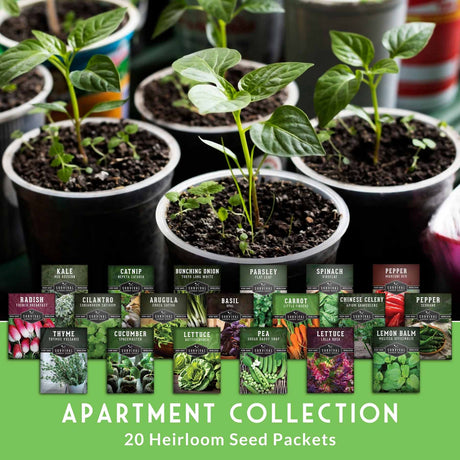Fall is the prime time for growing leafy greens. The cool weather sweetens their flavor, toning down their bitterness. Many prefer shorter days and crisp nights rather than the scorching summer heat. But many people don’t know the differences between these fall greens. Let’s look at the best greens to plant in fall and break them down by flavor intensity, so you can choose based on what you like to eat and your garden needs.
Mild & Sweet Fall Greens to Plant
These gentle greens have a mild, often sweet flavor, perfect for picky eaters who refuse to touch anything spicy or bitter. They’re versatile greens that you can use in many different ways to add something special to meals without overpowering the flavors of your dishes.
Lettuce
In a class all its own, lettuce is the mildest and sweetest of the greens and comes in a variety of colors and textures. Cool weather takes lettuce from a bitter bolting mess to crisp, sweet perfection for salads in the fall. Lettuce doesn’t need to be cooked. It’s best picked fresh from the garden.
Garden notes: You can’t get any easier than lettuce in fall. Direct seed in late summer for fall harvest. Depending on the variety, it matures between 45-80 days, but you can pick baby leaves whenever the mood strikes. Provide consistent moisture and shade during warm spells. Many varieties will tolerate light frosts.
Cabbage
The ultimate in versatile greens. Cabbage is delicious fresh in salads or cole slaw, cooked in soups, and fermented as sauerkraut. The heads store for a very long time, so you don’t have to use them immediately when they reach full size. Cool weather growing also cuts down on pest issues, making this a nearly foolproof beginner crop for fall gardeners.
Garden notes: Start your cabbage seeds in late summer, aiming for transplanting 6-8 weeks before the first frost. Give your plants consistent moisture and space them 12-18 inches apart to allow plenty of room for heads to develop.
Asian Greens

Tatsoi and bok choy (pak choi) are both mild and slightly sweet with some crunch. They’re excellent in stir-fries, offering some texture and nutrition without bitterness.
Garden notes: These greens are ready in 45-60 days, and can be direct seeded or transplanted spaced 6-8 inches apart. You’ll get quick results and an ongoing harvest if you succession plant.
Spinach
Tender and earthy spinach has a slight tang to it and is much sweeter when grown in cooler weather. One of the most versatile greens, it can be picked at the baby stage for salad greens or allowed to fully mature. Spinach is great sauteed, in smoothies, and as an addition to salads and soups.
Garden notes: Spinach is a fast grower, ready in 40-50 days. Direct seed every 2-3 weeks for continuous harvest.
The Crowd Pleasers with Balanced Flavor
Most people who like greens will enjoy these middle ground superstars. They have just enough bitterness or spiciness to give them some kick without being overwhelming.
Kale
The slightly earthy, bitter flavor of kale becomes much sweeter after frost. This is great because it’s an incredibly cold-hard and productive plant that can feed a family for months. The sturdy leaves will hold up well to cooking or can be shredded and massaged raw for salads.
Garden notes: Kale loves the cold, with mature plants often surviving down to 10°F. Plant transplants or direct seed, spacing 12-18 inches apart. Most people will start to harvest outer leaves in 60-70 days, but you can pick baby leaves whenever you’re ready.
Swiss Chard

Swiss chard has a mild beet flavor. It has colorful stems that add crunch and visual appeal. The leaves cook similarly to spinach but with more substance, while the stems need a few extra minutes of cooking time. Personally, I prefer to eat Swiss chard as a baby salad green.
Garden notes: This is a very forgiving crop that tolerates both heat and cold. It can withstand light frosts, but may need some protection in very cold regions. Direct seed or transplant, spacing 6-12 inches apart. Cut-and-come-again harvest means you can keep picking outer leaves.
Medium to Bold Leafy Greens
We’re starting to get to greens that have more distinct, hearty flavors. These greens are substantial enough to stand on their own as a dish and tend to be polarizing. Sometimes this is all about how they’re cooked, though. If you think you don’t like these greens, read on to expand your horizons.
Collard Greens
A Southern staple that I see everywhere in Alabama winters, collards are hearty and bitter. The chewy leaves stand up to long cooking methods, which soften the texture and change the flavor. Don’t let anyone tell you that there’s only one way to cook collard greens. I thought I didn’t like collard greens at all until someone served me some lightly sauteed in olive oil and lemon juice, with just a spritz of cooking aminos.
Garden notes: Cold-hardy down to 20°F (or more with protection) and heat-tolerant, this is the perfect winter green for those of us with unpredictable winters. Plant transplants 8-10 weeks before first frost, spacing 12-18 inches apart. Harvest individual leaves or cut the whole plant.
Turnip Greens

Both the leafy greens and sweet roots of the turnip plant are edible, so you’ll get two vegetables from one plant with this crop. The greens are sharp and peppery when raw, similar to mustard greens. They mellow out after you’ve cooked them, though. The roots become sweet and mild after frost and provide a delicious contrast to the greens when cooked together.
Garden notes: This fast-growing crop is ready in 30-60 days. Direct seed and thin the plants to 4-6 inches apart. Save the thinned baby greens for salads. Harvest greens first, then dig roots when you’re ready.
Spicy Greens
My favorite, these bold and spicy greens are for those who love intensity. A little goes a long way, so they’re often used as accents or mixed with other greens to add some interest to salads and dishes.
Mustard Greens
This is my favorite fall to winter green. The spicy, peppery punch of mustard greens can clear your sinuses in winter. The young leaves are milder and interesting to add to salads. The mature greens are excellent cooked and most people will prefer that you use them sparingly. I’ve found it’s wise to warn people that the greens are mustard and not turnips or collards. For some reason they don’t like the surprise.
Garden notes: Fast-growing crop ready in 30-50 days. Direct seed and space 6-12 inches apart. Can harvest baby leaves for milder flavor or let them mature for full intensity.
Arugula

Usually used as a salad green, arugula has a distinctive peppery, nutty flavor with a sophisticated bitter edge. It's expensive to buy but cheap and easy to grow. Use it in salads, as a garnish, or make it into pesto for a nice winter treat.
Garden notes: This is a super fast crop, ready in 20-30 days for baby leaves. Direct seed every 2 weeks for continuous harvest. You can space arugula tightly at around 4 inches apart, which makes this a great choice for patio gardeners.
Honorable Mentions
Some other fall crops have edible greens, even if that’s not the primary reason they’re grown. Kohlrabi, broccoli, radishes, beets, and even carrots have leafy greens that are excellent to eat. Their flavor matches the vegetable. Brussels sprouts may be considered a leafy crop by some, but they’re really more of a bud crop. And of course, there are fall herbs like cilantro and parsley that have very distinct flavors that don’t really fit in the mild to spicy spectrum.
Tips for Fall Green Success
Generally, these crops are forgiving. The cooler weather means less damage from insects, though you may need to protect them if you’ve got deer pressure or hungry rabbits in your neighborhood. Most of these greens will improve with a light frost, so don’t panic if temperatures dip. Sow new seeds every 2-3 weeks for a continuous harvest, especially if you like baby greens. And water consistently, as stressed plants will become bitter.
Mix It Up
Fresh, healthy greens are a welcome addition in the cooler season after the summer crops are done. Explore a little bit of everything, even if you think you don’t like leafy greens. If you start with the mild end of the spectrum and work your way up, you’ll find your favorites and decide which crops just aren’t for you. And mix it up with recipes, too. If you don’t like kale sautees, try a salad or baby greens. Maybe one day you’ll surprise yourself and find you’re craving the spicy kick of mustard greens or the bitter boldness of collards. No matter what you choose, planting fall greens adds fresh flavor, resilience, and variety to your cool-season garden. Browse our fall seed collection to find the perfect varieties for your taste preferences and growing zone.


